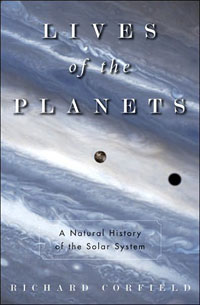Review: Lives of the Planetsby Jeff Foust
|
| Corfield integrates some science fiction and pop culture references in the book, particularly in the titles of subheadings of the chapters. |
However, Corfield diverges from that formulaic approach in the content of each chapter. Rather than a review and regurgitation of information about each world, Corfield treats each chapter as a more-or-less standalone essay, allowing him to riff on any number of topics related to it. The chapter on the Sun, for example, discusses topics as wide-ranging as Stonehenge and global warming, while the one on asteroids tackles both the discovery of the first asteroids to the threat some asteroids pose to the Earth. Other chapters focus more on the exploration of these worlds by robotic spacecraft, ranging from the Soviet Venera missions to Venus to the ill-fated Beagle 2 mission to Mars.
Corfield is a clever writer who integrates some science fiction and pop culture references in the book, particularly in the titles of subheadings of the chapters (examples: “Turning Japanese” about the Hayabusa asteroid mission, “Pinball Wizard” about the use of gravity-assist maneuvers to hurtle spacecraft into the outer solar system.) Sometimes, though, his attempt to be colorful borders on hyperbole: when plans for a “grand tour” of the outer solar system were canceled in 1971, Corfield writes, “Congress was in no mood to hand out $750 million checks to a bunch of slide rule-carrying Californian longhairs who liked building spacecraft better than helicopter gunships.” And was the decision to send Voyager 1 past Titan, whose clouds prevented the spacecraft’s camera from observing the surface, really “one of the worst moments in the history of unmanned space exploration”? It certainly seems like there have been more ignominious moments over the last several decades.
Corfield deserves credit for keeping Lives of the Planets from being yet another standard review of the solar system. What’s missing here, through, are any new insights or overarching theme for this book—other than that the last half-century of space exploration has revolutionized our understanding of the solar system, something that is hardly novel to most people. That’s a theme that’s likely to persist in books about the solar system for decades to come.
